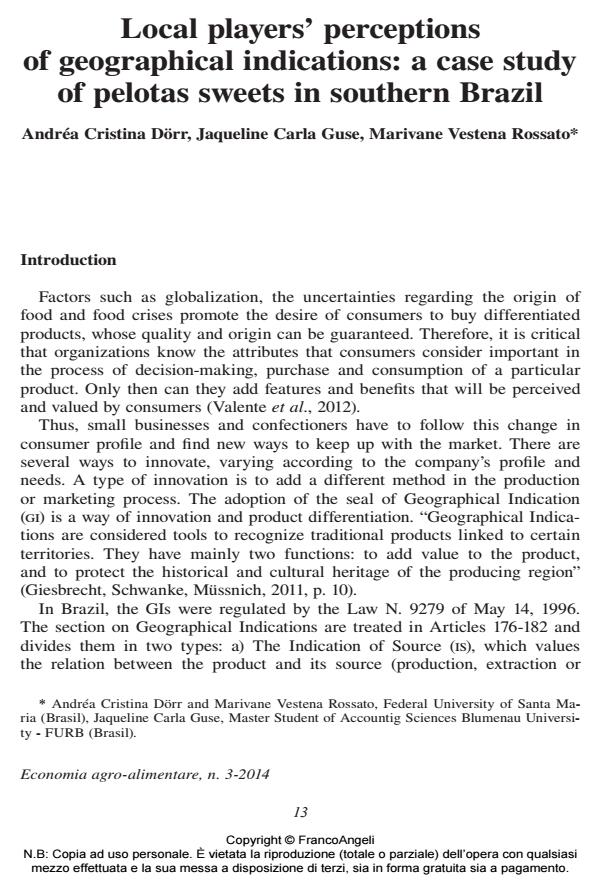Local players’ perceptions of geographical indications: a case study of pelotas sweets in southern Brazil
Titolo Rivista ECONOMIA AGRO-ALIMENTARE
Autori/Curatori Andrea Cristina Dorr, Jaqueline Carla Guse, Marivane Vestena Rossato
Anno di pubblicazione 2014 Fascicolo 2014/3
Lingua Inglese Numero pagine 13 P. 13-25 Dimensione file 170 KB
DOI 10.3280/ECAG2014-003003
Il DOI è il codice a barre della proprietà intellettuale: per saperne di più
clicca qui
Qui sotto puoi vedere in anteprima la prima pagina di questo articolo.
Se questo articolo ti interessa, lo puoi acquistare (e scaricare in formato pdf) seguendo le facili indicazioni per acquistare il download credit. Acquista Download Credits per scaricare questo Articolo in formato PDF

FrancoAngeli è membro della Publishers International Linking Association, Inc (PILA)associazione indipendente e non profit per facilitare (attraverso i servizi tecnologici implementati da CrossRef.org) l’accesso degli studiosi ai contenuti digitali nelle pubblicazioni professionali e scientifiche
The adoption of a Geographical Indication (gi) represents, among other things, a way of innovation and market advantage. As only a few, relatively recent studies have investigated this topic in Brazil, this research aims to verify the historical, cultural and economic perceptions of consumers and producers involved in the production chain of Pelotas sweets in relation to the adoption of gi. The case study was investigated through field research with primary data collection from 138 consumers and three case studies with producers who participated in the 21st fenadoce fair, in the city of Pelotas-RS, between May 31st and June 2nd, 2013. The findings reveal that consumers identify the Pelotas gi with the region of Pelotas. Pelotas gi sweets are recognized by consumers thanks to their alluring appearance, smell, taste and texture. We conclude that consumers have become more convinced about consuming a product which maintains the characteristics of its original recipes and, more than anything, the unmistakable flavor of Pelotas sweets.
Parole chiave:Geographical Indication, Pelotas Sweets, innovation
Jel codes:Q13, Q17, D12
Andrea Cristina Dorr, Jaqueline Carla Guse, Marivane Vestena Rossato, Local players’ perceptions of geographical indications: a case study of pelotas sweets in southern Brazil in "ECONOMIA AGRO-ALIMENTARE" 3/2014, pp 13-25, DOI: 10.3280/ECAG2014-003003